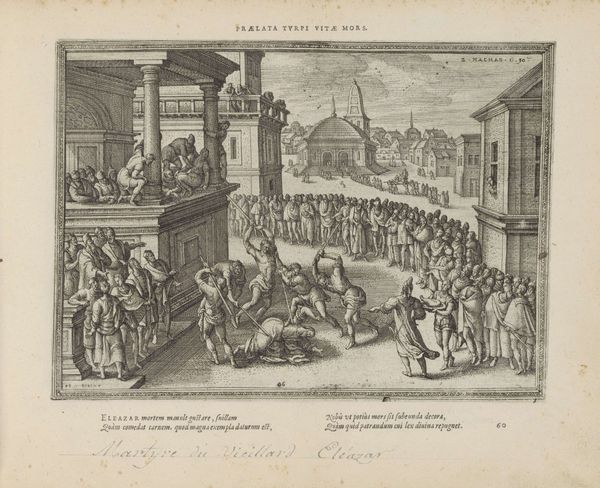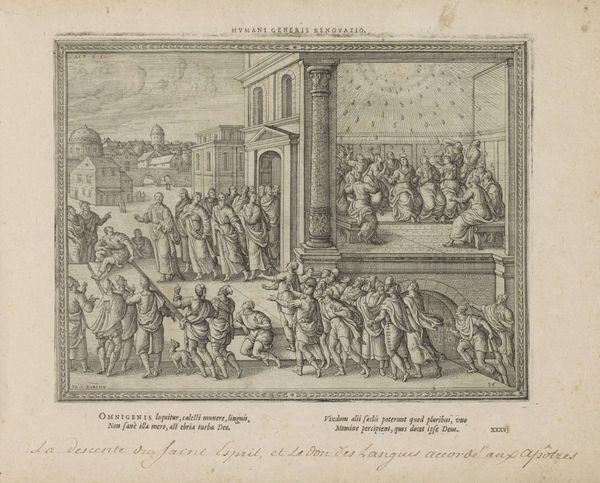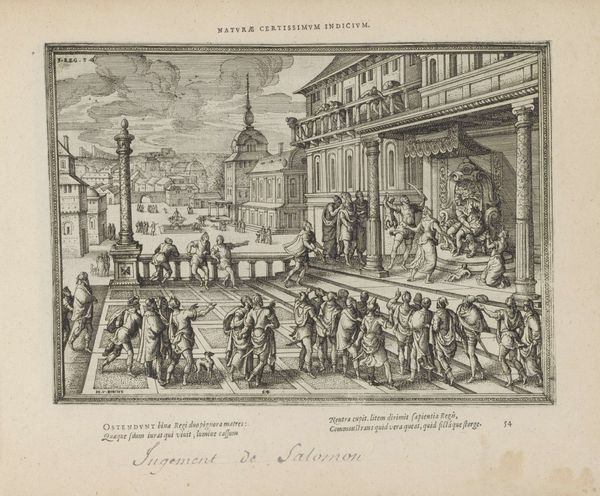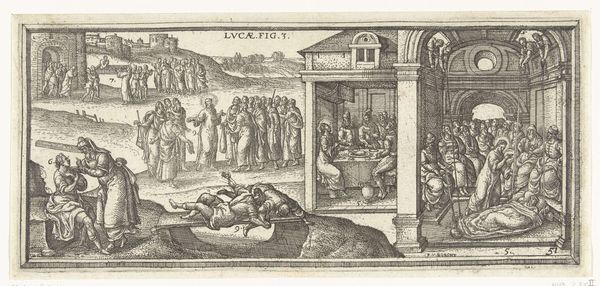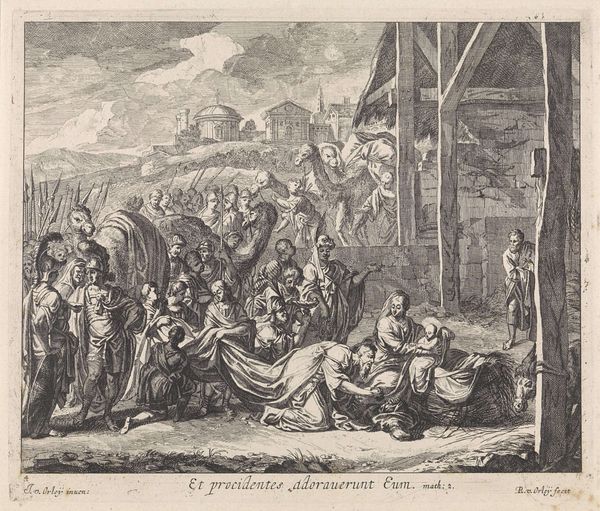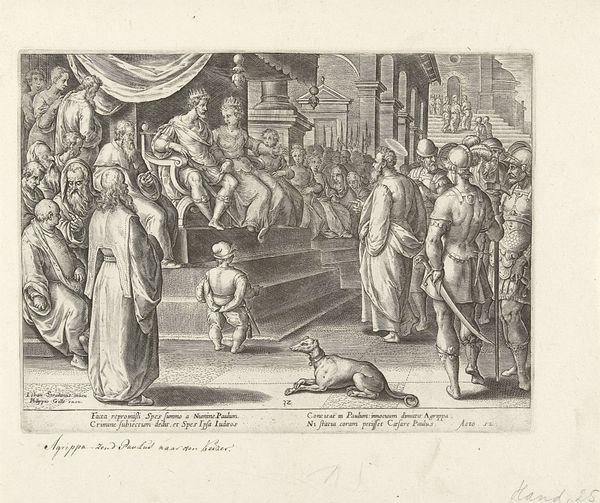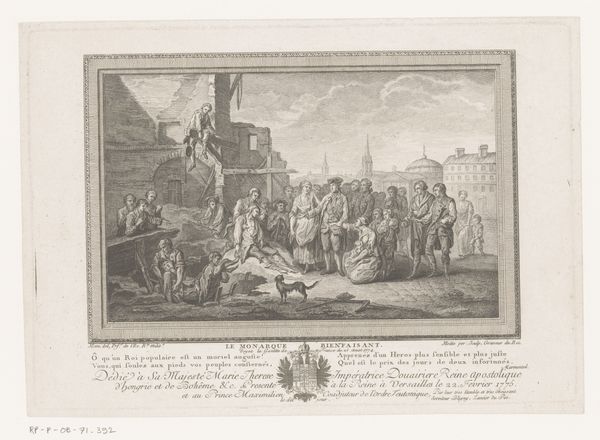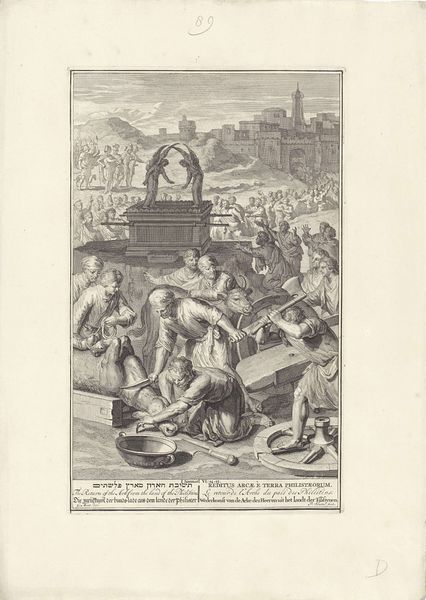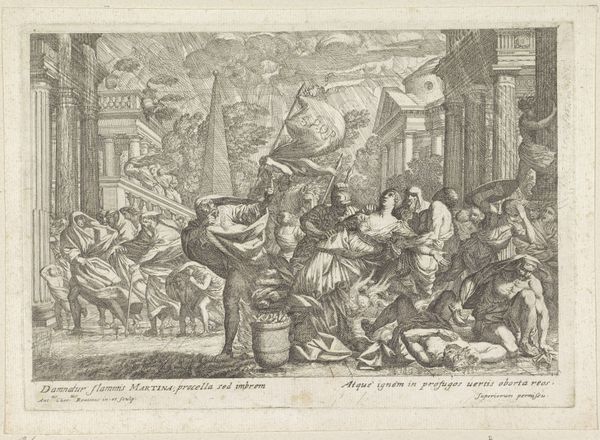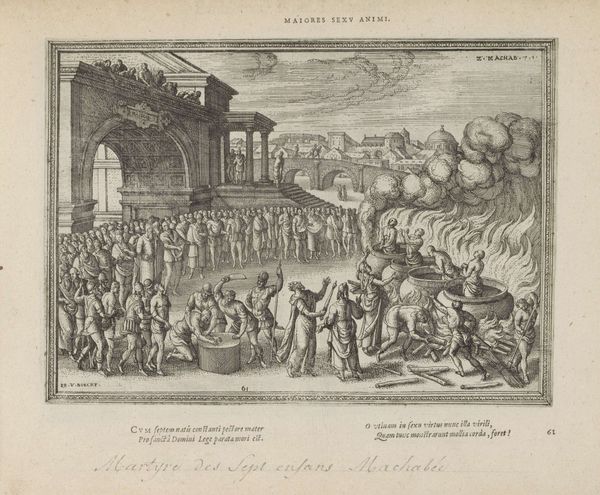
print, engraving
#
narrative-art
# print
#
figuration
#
line
#
history-painting
#
northern-renaissance
#
engraving
Dimensions: height 189 mm, width 259 mm
Copyright: Rijks Museum: Open Domain
Editor: This print, "Drie jongelingen in de brandende oven," made sometime between 1582 and 1613 by Pieter van der Borcht I, is an engraving, full of tightly packed figures and architectural details. It feels…theatrical, almost staged. What historical narratives do you see at play here? Curator: Well, beyond the immediate biblical narrative of resistance to tyranny, I'm struck by how the image itself becomes a stage for exploring themes of religious and political defiance within the context of the Northern Renaissance. Consider how the classical architecture might represent an oppressive power structure, against which these "jongelingen" stand. Where do you see visual cues about class or gender in this image? Editor: I see men being thrown into the furnace. Is there any symbolic value attached to the three men’s survival amidst the fire? Curator: Absolutely. Their survival can be interpreted as a potent symbol of resilience against oppression and injustice. It resonates with marginalized communities throughout history and even today, those who have faced persecution for their beliefs or identities. The flames are a kind of trial or crucible… are they purified, or simply martyred? Editor: So, you’re saying this isn't just a religious scene, but a commentary on resisting unjust authority, one that could also apply to, say, gender or racial power dynamics? Curator: Precisely! Art, particularly historical prints like this, invites us to consider how power operates within society. It's fascinating to see the dialogue between this historical work and contemporary concerns. Editor: That's incredible, I didn’t think of it that way! Curator: Thinking about it now, it shows us how historical art remains incredibly resonant and gives context to the fight for freedom. Editor: Exactly! It’s helpful to consider a broader picture when viewing art. Thanks!
Comments
No comments
Be the first to comment and join the conversation on the ultimate creative platform.
